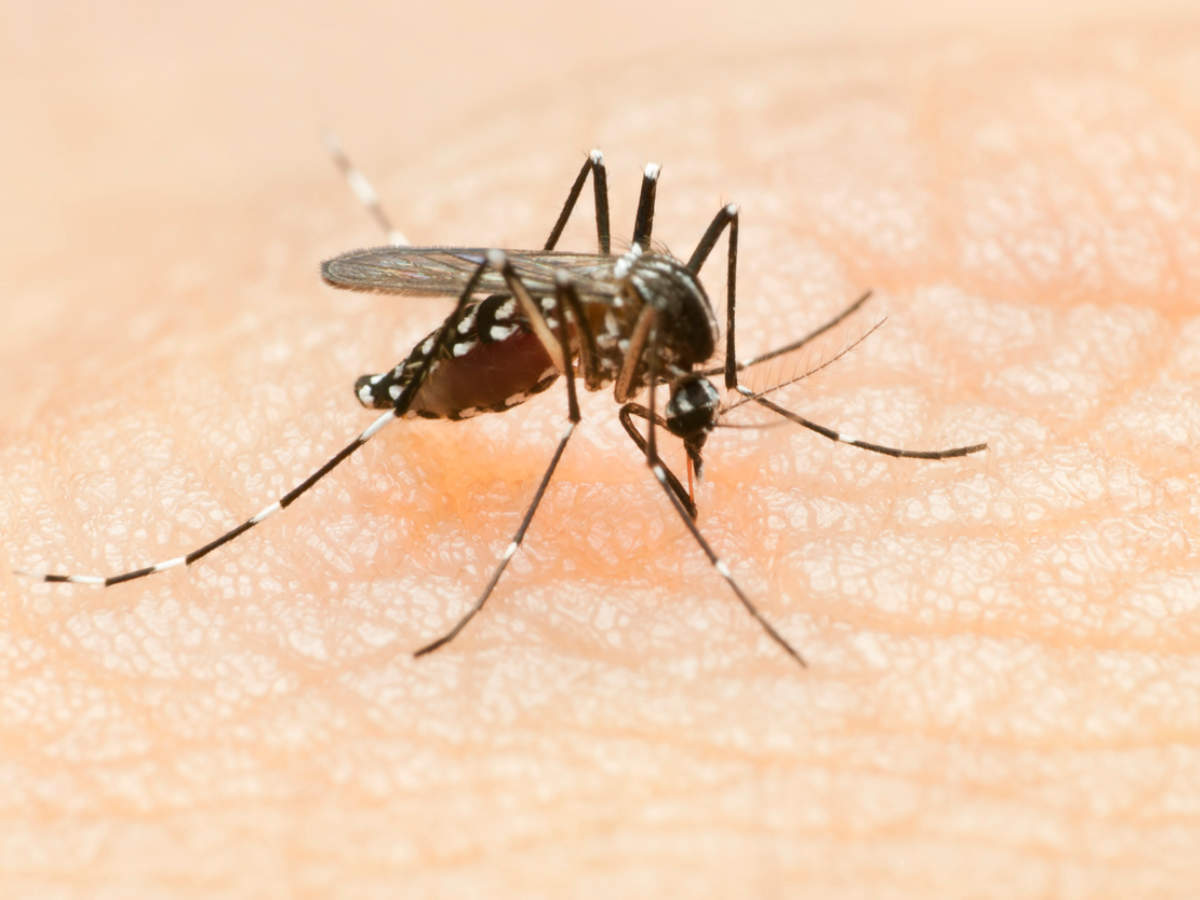Dengue fever is a viral infection transmitted to humans by the bite of an infected mosquito, aedes aegypti. This infection is prevalent across the world and the incidence is more during the season when the mosquito breeding is more i.e, rainy season. Aedes mosquito usually bites during daytime (for 2 hours after sunrise and few hours before sunset). There are 4 serotypes (types) of the virus and the infection could occur due to any one of them. Infection with one serotype does not protect against infections from other serotypes.
What are the features of Dengue fever?
Fever is the predominant symptom. It usually lasts for 3 to 5 days, rarely beyond 7 days. It is high grade fever sometimes associated with chills. Some patients experience fever again after a brief period of recovery from initial fever (biphasic fever). Severe body pains (break bone fever), joint pains, low back ache, pain behind the eyes and headache is a common feature. Other symptoms which are less common include nausea, vomiting, loose motions, pain in the abdomen, general weakness and tiredness. Patients can develop skin rash between day 5 and day 7 or at the time when fever is settling down. Burning sensation or feeling of pins and needles in palms and feet can be associated with skin rash. Skin rash is typically seen as multiple reddish small dots (like pin heads) over the legs and arms, occasionally there may be itching also.
Blood tests show low white cell count (low lymphocytes) during the early phase of the illness. Subsequently, the white cell count improves and platelet count usually reduces (coinciding with cessation of fever). Platelet count drops and after 3-5 days it improves by itself. Occasionally the count drops alarmingly and platelet transfusion may be required. Liver function tests show elevation of liver enzymes which again settles down by itself after few days. Jaundice is rare.
Dengue fever virus can affect any organ in the body and rarely patients may develop cough, breathlessness, blurring of vision, reduced level of consciousness and seizures.
What are the complications of the infection?
Many patients recover with no complications, rarely patients develop complications.
1) Dengue shock syndrome and Dengue haemorrhagic fever. It is difficult to predict which patient will develop complications. It is important to avoid dehydration during the illness and also remain under medical supervision until the platelet count improves. Dengue shock syndrome is a clinical situation where patient’s blood pressure is low. This occurs due to leakage of fluid from damaged blood vessels.
Dengue haemorrhagic fever is a condition where there is excessive bleeding from multiple sites.
2) ARDS, which is a condition involving both the lungs leading to low oxygen levels and respiratory failure.
3) Multiorgan failure
4) Encephalitis- involvement of brain leading to reduced level of consciousness and seizures occasionally
5) Severe hepatitis- mild elevation of liver enzymes is common in dengue fever. Rarely, liver enzymes may rise more than 10 times normal and also cause jaundice.
Can a person get infected more than once?
Yes, Infection with one type of virus (serotype) provides transient immunity against the other serotypes of the virus but soon the protection weakens and the person will be susceptible for disease due to other serotype. In areas where dengue virus infection is rampant and more than one serotype of virus is prevalent then the 2nd infection from a different serotype can cause serious illness. It is important to take protection against mosquito bites especially in areas where dengue fever is endemic (high prevalence).
What measures/precautions are there to protect from getting infected?
There are several measures one can take to protect from acquiring dengue fever:
a) Stop the breeding of mosquitoes
b) Stop mosquito bites
Mosquito breeding places are those areas where there is stagnation of water like pots, pits, pools, fountains, unused tyres, construction sites etc. Remove such items or take measures to prevent water stagnation. Spraying larvicidal chemicals on water stagnation areas can also help reduce mosquito population.
Prevent mosquito bites by using mosquito repellent creams on skin surface, mosquito nets, mosquito screens, mosquito repellents bands, mosquito repellent vapour or smoke. Wear clothes which cover the body as much especially when you are outdoor.
What investigations are required to diagnose dengue fever?
Dengue fever is diagnosed by performing blood tests which can be positive as early as few hours after onset of fever (usually < 24 hours). In the early phase of the illness, Dengue NS1 antigen can be detected (1-7 days). Subsequently, after day 5 IgM antibody tests can be positive. A positive IgG antibody test and negative NS1 antigen/IgM antibody test means old infection. Detection of Dengue NS1 antigen alone and (or) IgM antibody means recent infection.
In India, 2 different types of tests are performed a) rapid diagnostic tests b) Specific diagnostic tests (ELISA/EIA methods).
Rapid diagnostic tests are less expensive tests, widely available and useful for testing large population or in areas where specific tests are not available. However, rapid diagnostic tests have around 80% sensitivity (can miss 2 cases out of 10). So, it’s important to confirm the diagnosis by performing the specific test where needed.
Do not wait for platelet count to drop to make a diagnosis of dengue fever in patients presenting with fever. Absence of low platelet count in blood tests performed in the initial phase of illness does not exclude dengue fever. If dengue fever is suspected either a rapid diagnostic test or specific test should be performed not a complete blood picture looking for low platelet count. As mentioned before, platelet count can be completely normal in the initial phase of the illness.
What treatment is available for dengue fever?
There is no specific medication to treat dengue fever or neutralize the effect of the virus. Supportive treatment is the only way of management. Adequate fluid hydration is an important measure to weaken the effects of the virus and also prevent onset of complications.
Do not use medications which are not necessary. Do not use antibiotics unless there is evidence to believe existence of bacterial infection also. Avoid using strong pain killers. Paracetamol has been found to be safe in the management of fever and or body pains. Do tepid sponging to control fever if necessary.
There are no proven medications which help improve the platelet count. Platelet count improves by itself as the effect of the virus weakens but it has been observed that many times the improvement of platelet count has been wrongly attributed to some medication.
If patient develops skin rash, vomiting or diarrhea it has to be managed symptomatically by using appropriate medications. It is important to follow the advice of your doctor regarding the medications you can take and medications you have to avoid. Do not do self medication. Your doctor will decide if you require hospital admission. It is important to alert your doctor if you notice any bleeding under the skin or from nose or mouth or from the back passage (anus).
When does a patient require platelet transfusion?
This decision should be entirely left to the treating clinician to decide when a patient requires platelet transfusion. There are many factors which may prompt the doctor to take a decision which you may not fully understand. Doctors usually do not give platelet transfusion if there is no bleeding and platelet count is above 20,000. However, many times the decision may not be so easy. Hematologist (blood specialist) consultation should be taken where necessary and available. 2 types of platelet transfusions exist- single donor platelet transfusion, where the platelet enriched packet is collected from 1 patient and random donor platelet transfusion, where it is collected from multiple donors.



